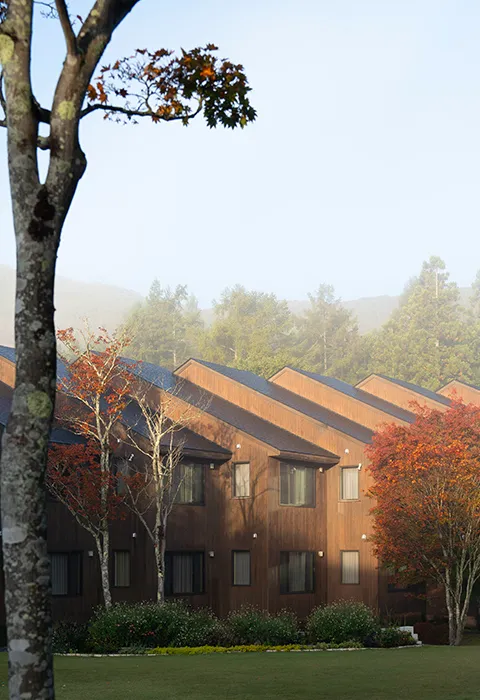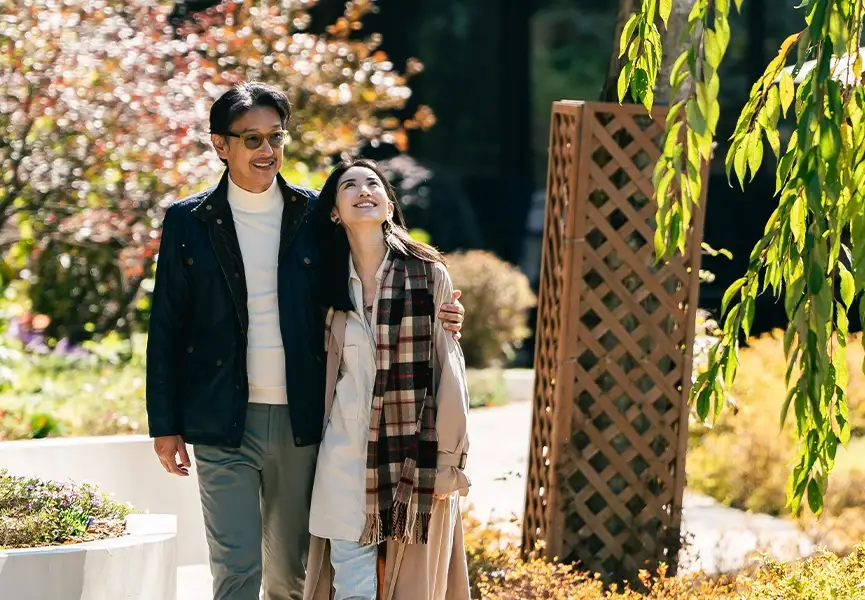
cityguide
- TOP
- City Guide
- The best season and place to see Skeleton Flower in Hakuba
Activities for children
For the whole family
Hakuba nature and wildlife
2024/05/28
The best season and place to see Skeleton Flower in Hakuba
The "Sankayou" flower becomes transparent when wet with rain or morning dew. The white petals look like glass and are a dream to look at on social media. In this article, we will introduce the charm of the mysterious flower "Sankayou" and the "Sankayou" spots around Hotel Sierra Resort Hakuba.
What kind of flower is Sankayou?
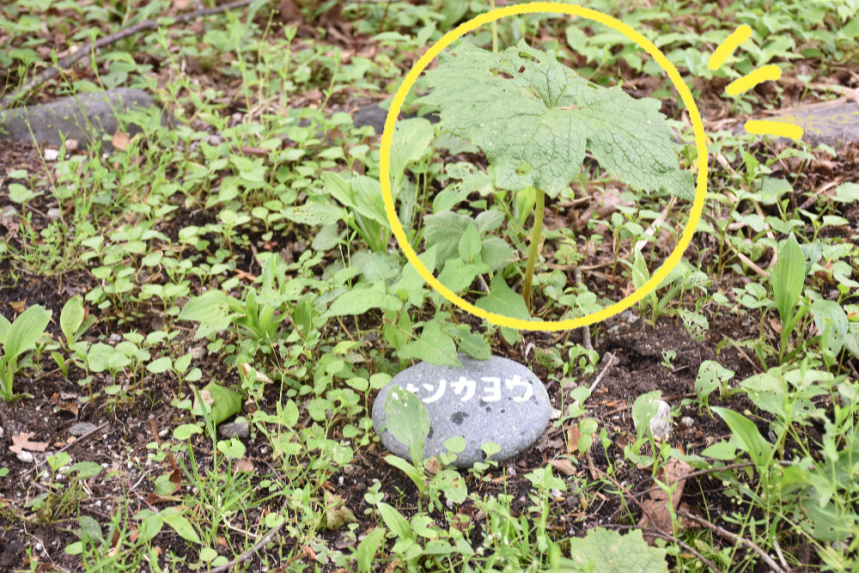
Sankayo is a perennial plant that grows in mountain marshes. It is also known as the "skeleton flower." Its Japanese name, "Yamakayo," comes from the fact that it grows in the mountains and resembles a lotus leaf. It produces several white, six-petaled flowers, each about 2 cm in diameter, on the stem. Sankayo are also planted on the hotel's walking paths. The names of the plants are written on the grounds, so try to find them while you're walking around during your stay!
Why does the sunflower become transparent when it gets wet?
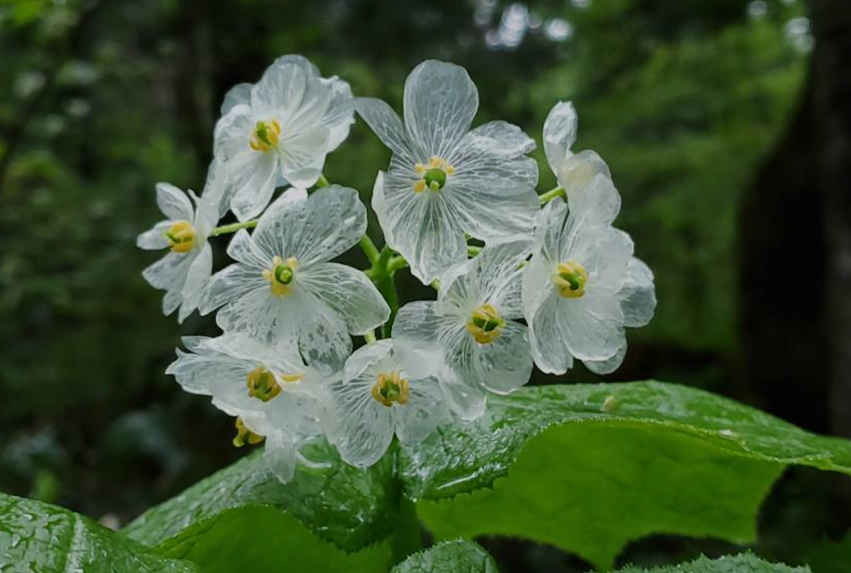
When dry, the sunflower flower appears white, not because it contains white pigment, but because the tiny air bubbles in the petals scatter light. When the air bubbles fill with water, the light scattering stops and the flower appears transparent.
A familiar example is when tissue becomes transparent when wet, or when a white shirt becomes see-through when wet. However, it doesn't become transparent immediately when it gets wet. Various conditions are required, such as being exposed to light, drizzling rain for a long period of time.
When can you see the sunflowers?
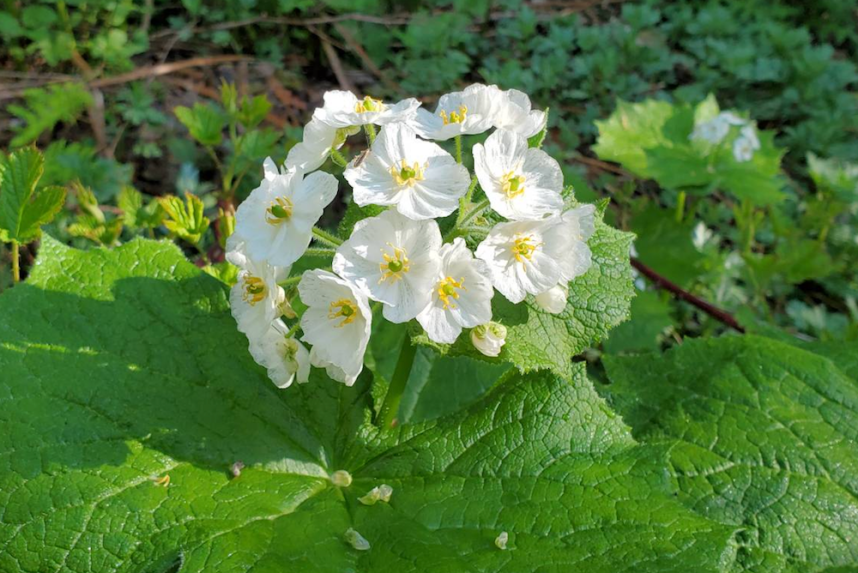
The flowering season is from May to July, but the best viewing time varies depending on the weather, region, and where it grows. The flowering period lasts about a week, and it is so ephemeral and beautiful.
Recommended spots to see the sun goddess
Sankayo lives in cool, high mountain areas in slightly damp conditions. In Japan, it can be found in the mountainous regions of Hokkaido and Nagano, and in the Oze Marshes of Gunma. Sankayo blooms on the walking trails on the museum grounds. From here, we will introduce some "Sankayo" spots around Hakuba.
Tsugaike Nature Park
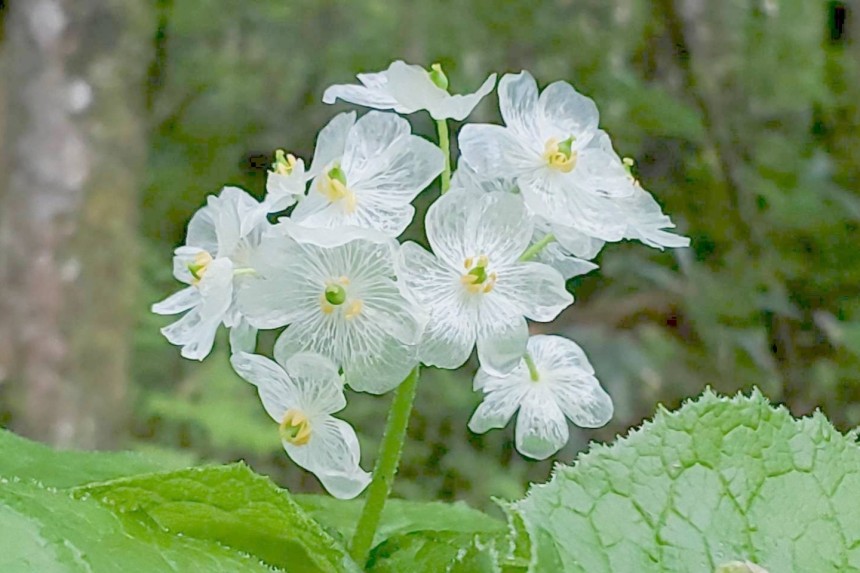 This is a photo of a Japanese laurel taken by our garden staff at Tsugaike Nature Park.
This is a photo of a Japanese laurel taken by our garden staff at Tsugaike Nature Park.
Tsugaike Nature Park, located at an altitude of 1,900m, is one of the leading high-altitude wetlands in Japan, and has boardwalks throughout the park where you can enjoy a variety of flora and fauna. On clear days, you can see the Hakuba Sanzan mountains and the Ushiro Tateyama mountain range.
Hakuba Goryu Alpine Botanical Garden
This botanical garden spreads out over the Hakuba Goryu Alps at an altitude of 1,515m. From June to October, you can enjoy over 300 species and 2 million alpine plants. In early July, the mysterious blue flower "Himalayan blue poppy" blooms beautifully. It is about 30 minutes by car from our hotel.
Nozawa Onsen Ski Resort
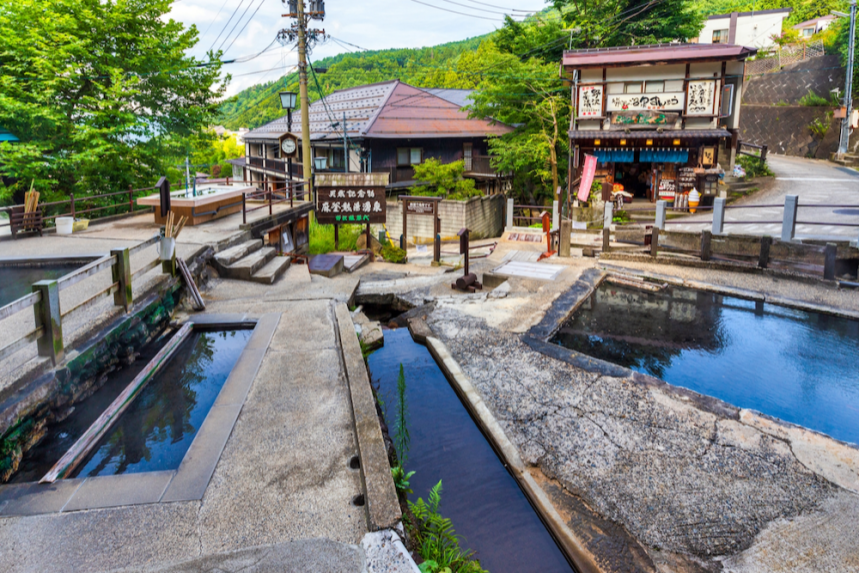
Although it is a little far from Hakuba Village, there is also an area where Sankayo grows in large numbers on the Yamabiko slopes of Nozawa Onsen Ski Resort. We recommend visiting the flowers and wildflowers before enjoying a tour of the outdoor baths.
summary
The flower language of the Sankayou is "pure person," "affection," "happiness," and "free-spirited." Why not go out and look for "happiness" blessed by the rain? It may be difficult to find a transparent Sankayou, but you can enjoy other alpine plants on a trek!
*The best viewing times vary from year to year even during the flowering season, so please check with each facility for the latest information.

